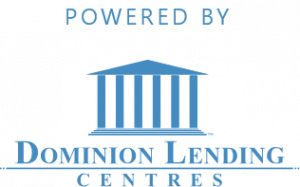Affording a 2nd Property
More and more Canadians are choosing to buy a second property in retirement. Some want to reap the rewards of a lifetime of saving and treat themselves to a vacation home. Others, on the other hand, view their second property as an investment, intending to rent it out and use the income in affording a 2nd property
Whatever your reasons for wanting to buy a second property, there are various ways you might choose to pay for it – let’s have a look at what those are.
PAYING THE DOWN PAYMENT – Affording a 2nd Property
Just like your first property, you’ll need a down payment for your second property. This can be as little as 5% but ideally should be higher – try aiming for 20%.
CASHING IN INVESTMENTS
One way that you may choose to make the down payment is by cashing in on investments. When considering this, however, caution should be exercised. Cashing in on investments in a taxable account can trigger taxes and OAS clawback, as well as potentially pushing you into a higher tax bracket. Taking large sums from your investments will also reduce the size of your portfolio, which can have a knock-on affect on your retirement income. Outliving savings is something all retirees should be conscious of, so think carefully before making large withdrawals that may deplete your pension pot too quickly.
TAKING OUT A HELOC
A Home Equity Line of Credit (HELOC) is a revolving line of credit secured against your primary residence which allows you to access up to 65% of your home’s value. Taking out a HELOC to pay for the down payment can be a good option to avoid cashing in on investments, but they’re not without their limitations. It’s recently become more difficult to get approval for a HELOC, and many retired Canadians without a fixed monthly income have seen their applications denied. If you manage to get approved for the loan, be aware that you need to service it each month, which will have an affect on your monthly cashflow.
USING THE CHIP REVERSE MORTGAGE
Another way to afford the down payment on your second property is with the CHIP Reverse Mortgage. The CHIP Reverse Mortgage allows you to access up to 55% of your home’s value in tax-free cash, meaning it won’t trigger taxes or OAS clawback, or push you into a higher tax bracket. Unlike a HELOC, with a reverse mortgage you don’t repay what you owe until you move out of your home or pass away, so there are no monthly repayments eating into your cashflow. What’s more, depending on how much equity you have built up in your home and how much your home is worth, you may be able to pay off a significant amount of your second property – perhaps even paying for it outright!
PAYING OFF THE MORTGAGE
Unless you were able to pay for your second property outright, chances are you’ll have a monthly mortgage to pay in affording a 2nd property
If your second home is an investment property, you likely intend to rent it out. In this case, the rent you charge should be enough to cover your mortgage payments (and hopefully a little extra for you each month).
On the other hand, if your second property is a vacation home, you’ll need to factor mortgage repayments into your monthly budget. One way to get the best of both worlds is by renting your vacation property out for short-term holiday lets. This will help you cover some, if not all, of the mortgage payments, while also giving you the flexibility to enjoy your vacation home whenever you want. Want to know more about how the CHIP Reverse Mortgage could help you afford a second property? Contact us to learn more!


